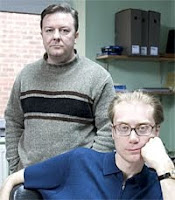 By Sinéad Ferguson (Producer)
By Sinéad Ferguson (Producer)It’s true that your first time dealing with an agency can be a little intimidating, even more so if it is a rather large, well established and highly respected agency that manages a lot of artists. It’s important to do your homework on the agency and know who exactly you are dealing with.
From experience having your named actor agree to come on board your project is one thing. But ultimately it’s then dealing with their agent/agency that is then going to make or break that agreement. So be really professional, honest and transparent about your project and your intentions.
Having sent the usual information, script, film synopsis and the character breakdown it is only then you engage in real communication. For me it involved countless phone calls and emails. It is imperative that not only are you passionate about your project but that you know your project inside and out. It’s also just as important to know your stuff regarding contracts and PACT/Equity. Trust me, you will be quizzed on everything, remember you are dealing with a professional and if you don’t know what you’re talking about, your capabilities as a producer will be called into question. How you communicate and deal with the actor’s agent/agency is a reflection of how you intend dealing with their client and the project as a whole. So don’t cause them to have any reasons to doubt you or your film.
It’s then down to negotiation including fees, the contract itself (if you are using your own, ensure it meets the standards of a PACT/ Equity agreement) finalising filming dates (though this will most likely have been discussed in one of your first conversations) then there is the billing of the star, if they will be required to do ADR and the list goes on and on. Don’t second guess anything. From the get go I laid my cards on the table and cut to the chase, aware that I was dealing with someone who was very busy. Not wanting to waste either of our precious time, I was clear, concise and direct in my communication, while always remaining courteous and polite of course.
After speaking to each other a couple of times and getting to know each other a little better, I encouraged suggestions from her. Ultimately while always remaining completely professional, she proved to be very helpful . If you do have to negotiate be aware that you probably have limited powers in this instance, however that is not to say it’s impossible. I had at least one incident that I was very reluctant to agree to, as you have to keep the project as a whole always at the forefront of your mind. However, it was my approach and the manner in which I negotiated, that eventually resulted in my success.







